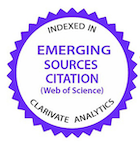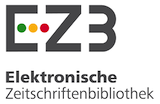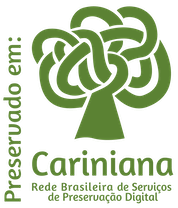Caracterização e digestão anaeróbia dos dejetos de suínos submetidos a restrição alimentar ou suplementados com ractopamina ou cromo
DOI:
https://doi.org/10.1590/1809-6891v25e-77719EResumo
Realizou-se este estudo com o objetivo de caracterizar a produção e a digestão anaeróbia de dejetos de suínos em terminação submetidos a restrição alimentar ou suplementados com ractopamina ou cromo. Os dejetos foram provenientes de 50 suínos machos castrados, em fase de terminação, com ± 154 dias de idade, com peso inicial de 99,0 ± 4,4 kg e final de 117,2 ± 5,8 kg. As dietas experimentais foram: controle (dieta convencional); restrição qualitativa (redução de 7,5% de energia líquida em relação à dieta controle); restrição quantitativa (redução de 15% no fornecimento de ração); cromo (0,8 mg); e ractopamina (10 ppm). Os dados foram submetidos à análise de variância por meio do delineamento em blocos ao acaso, no qual as semanas de análises foram consideradas como blocos (cofator). Não foram observadas diferenças entre as dietas nas produções de dejetos na matéria natural (MN), matéria seca (MS), matéria mineral (MM) e matéria orgânica (MO). Animais que receberam a dieta controle apresentaram o maior coeficiente de resíduo e não houve diferença entre as demais dietas. Não foram observadas diferenças entre as dietas para sólidos totais, pH e nitrogênio total dos afluentes e efluentes. O maior rendimento de biogás (574 mL g-1 de SV adicionados) foi obtido com os digestores abastecidos com dejetos de animais alimentados com dieta qualitativamente restrita. Conclui-se que a dieta com restrição qualitativa resulta em maior produção de dejetos, porém com menores excreções de nitrogênio e fósforo e maior rendimento de biogás.
Downloads
Referências
Silva ADL, Moreira JÁ, Oliveira RLR, Mota LC, Teixeira ENM, Souza JG, Oliveira RGP. Qualitative feed restriction for late finishing pigs on meat quality and fatty acid profile. Semina: Ciências Agrárias. 2016; 37(4): 2343-2353. https://doi.org/10.5433/1679-0359.2016v37n4Supl1p2343
Njoku C, Adeyemi O, Sanwo K, Sanya B, Popoola A, Aina A. Effects of qualitative and quantitative feed restriction on carcass yield and pork quality. Polish Journal of Natural Sciences. 2018; 33(1): 29-48. http://www.uwm.edu.pl/polish-journal/sites/default/files/issues/articles/njoku_et_al_2018_0.pdf
Vasconcelos TS, Thomaz MC, Castelini FR, Alvarenga PVA, Oliveira JÁ, Ramos GF, Santos Ruiz U. Evaluation of pineapple byproduct at increasing levels in heavy finishing pigs feeding. Animal Feed Science and Technology. 2020; 269(1): 114664. https://doi.org/10.1016/j.anifeedsci.2020.114664
Santos APD, Kiefer C, Martins LP, Fantini CC. Restrição alimentar para suínos machos castrados e imunocastrados em terminação. Ciência Rural. 2012; 42(1): 147-153. https://doi.org/10.1590/S0103-84782012000100024
Evans GW, Bowman TD. Chromium picolinate increases membrane fluidity and rate of insulin internalization. Journal of Inorganic Biochemistry. 1992; 46(4): 243-250. https://doi.org/10.1016/0162-0134(92)80034-S
Vincent JB. Effects of chromium supplementation on body composition, human and animal health, and insulin and glucose metabolism. Current Opinion in Clinical Nutrition & Metabolic Care. 2019; 22(6): 483-489. https://doi.org/10.1097/MCO.0000000000000604
Farias TVA, Kiefer C, Nascimento KMRDS, Corassa A, Alencar SADS, Rodrigues GP, Santos APD. Chromium and energy restriction as substitutes for ractopamine in finishing gilts diet. Ciência Rural. 2022; 52(1): e20200736. https://doi.org/10.1590/0103-8478cr20200736
Ele T, Wei C, Lin X, Wang B, Yin G. Meta-analysis of the effects of organic chromium supplementation on the growth performance and carcass quality of weaned and growing-finishing pigs. Animais. 2023; 13(12): 2014. https://doi.org/10.3390/ani13122014
Leal RS, Mattos BOD, Cantarelli VDS, Carvalho GCD, Pimenta MEDSG, Pimenta CJ. Performance and carcass yield of pig fed diets containing different levels of ractopamine. Revista Brasileira de Saúde e Produção Animal. 2015; 16(1): 582-590. https://doi.org/10.1590/S1519-99402015000300010
Pompeu MA, Rodrigues LA, Cavalcanti LFL, Fontes DO, Toral FLB. A multivariate approach to determine the factors affecting response level of growth, carcass, and meat quality traits in finishing pigs fed ractopamine. Journal of Animal Science. 2017; 95(4): 1644-1659. Disponível em: https://doi.org/10.2527/jas.2016.118
Rickard JW, Allee GL, Rincker PJ, Gooding JP, Acheson RJ, McKenna DR, Carr SN. Effects of ractopamine hydrochloride on the growth performance and carcass characteristics of heavy-weight finishing pigs sent for slaughter using a 3-phase marketing strategy. Translational Animal Science. 2017; 1(1): 406–411. https://doi.org/10.2527/tas2017.0053)
Andretta I, Kipper M, Lehnen CR, Demori AB, Remus A, Lovatto PA. Meta-analysis of the relationship between ractopamine and dietary lysine levels on carcass characteristics in pigs. Livestock Science. 2012; 143(1):91-96. https://doi.org/10.1016/j.livsci.2011.09.004
Almeida VVD, Nuñez AJC, Miyada VS. Ractopamine as a metabolic modifier feed additive for finishing pigs: a review. Brazilian Archives of Biology and Technology. 2012; 55: 445-456. https://doi.org/10.1590/S1516-89132012000300016
Rostagno HS, Albino LFT, Donzele JL, Gomes PC, Oliveira RD, Lopes DC, Euclides RF. Tabelas brasileiras para aves e suínos: composição de alimentos e exigências nutricionais. 3ª Ed. Viçosa: UFV, 2011. 252p.
Apha - American Public Health Association. Standard methods for the examination of water and wastewater. 24th ed. Washington DC: APHA, AWWA, WEF, 2023, 1624p.
Ripley LE, Boyle WC, Converse JC. Improved alkalimetric monitoring for anaerobic digestion of high-strength wastes. Journal Water Pollution Control Federation. 1986; 58(1): 406-411. https://www.jstor.org/stable/25042933
Jenkins SR, Morgan JM, Zhang X. Measuring the usable carbonate alkalinity of operating anaerobic digesters. Journal Water Pollution Control Federation. 1991; 63(1): 28-34. https://www.jstor.org/stable/25043948
Silva DJ, Queiroz AC. Análise de Alimentos (métodos químicos e biológicos), 3ª Ed. Viçosa: UFV, 2006. 235p.
Perkin-Elmer Corporation. Analytical methods for anatomic absorption spectrophotometry. Morwalk, 1996. 300p.
Malavolta E, Vitti GC, Oliveira SA. Micronutrientes, uma visão geral. In: Ferreira ME, Cruz MC. Micronutrientes na agricultura. Piracicaba: POTAFOS/CNPq, 1991. p.1-33.
González-Fernández C, García-Encina. Impact of substrate to inoculum ratio in anaerobic digestion of swine slurry. Biomass and Bioenerg. 2009; 33(8): 1065-1069. https://doi.org/10.1016/j.biombioe.2009.03.008
Astals S, Ariso M, Galí A, Mata-Alvarez J. Co-digestion of pig manure and glycerine: Experimental and modelling study. Journal of Environmental Management. 2011; 92(4): https://doi.org/1091-1096, 10.1016/j.jenvman.2010.11.014
Coca FOCG, Xavier CAN, Andrade WR, Arruda LDO, Gonçalves LMP, Kiefer C, Santos TMB. Produção de biogás com dejetos de suínos – efeito de energia líquida e ractopamina da dieta. Archivos de Zootecnia. 2016; 65(252): 507-512. https://doi.org/10.21071/az.v65i252.1918
Morozova I, Nikulina N, Oechsner H, Krümpel J, Lemmer A. Effects of Increasing Nitrogen Content on Process Stability and Reactor Performance in Anaerobic Digestion. Energies. 2020; 13(5): 1139. https://doi.org/10.3390/en13051139
Agyeman FO, Han Y, Tao W. Elucidating the kinetics of ammonia inhibition to anaerobic digestion through extended batch experiments and stimulation-inhibition modeling. Bioresource technology. 2021; 340(1): 125744. https://doi.org/10.1016/j.biortech.2021.125744
Nguyen VK, Chaudhary DK, Dahal RH, Trinh NH, Kim J, Chang SW, Nguyen DD. Review on pretreatment techniques to improve anaerobic digestion of sewage sludge. Fuel, 2021. 285(1): 119105p. https://doi.org/10.1016/j.fuel.2020.119105
Zamri MFMA, Hasmady S, Akhiar A, Ideris F, Shamsuddin AH, Mofijur M, Mahlia TMI. A comprehensive review on anaerobic digestion of organic fraction of municipal solid waste. Renewable and Sustainable Energy Reviews. 2021; 137 (1):110637. https://www.sciencedirect.com/science/article/abs/pii/S1364032120309217
Zhang W, Li L, Xing W, Chen B, Zhang L, Li A, Yang T. Dynamic behaviors of batch anaerobic systems of food waste for methane production under different organic loads, substrate to inoculum ratios and initial pH. Journal of bioscience and bioengineering. 2019; 128(6): 733-743. https://doi.org/10.1016/j.jbiosc.2019.05.013
Kothari R, Pandey AK, Kumar S, Tyagi VV, Tyagi SK. Different aspects of dry anaerobic digestion for bio-energy: an overview. Renewable and Sustainable Energy Reviews. 2014; 39(1): 174-195. https://doi.org/10.1016/j.rser.2014.07.011
Xu F, Li Y, Ge X, Yang L, Li Y. Anaerobic digestion of food waste - challenges and opportunities. Bioresource Technology. 2018; 247(1): 1047-1058. https://10.1016/j.biortech.2017.09.020
Li Y, Chen Y, Wu J. Enhancement of methane production in anaerobic digestion process: a review. Applied Energy. 2019; 240(1): 120-137. https://doi.org/10.1016/j.apenergy.2019.01.243
Atelge MR, Atabani AE, Banu JR, Krisa D, Kaya M, Eskicioglu C, Duman, FATİH. A critical review of pretreatment technologies to enhance anaerobic digestion and energy recovery. Fuel. 2020; 270(1): 117494. https://doi.org/117494,10.1016/j.fuel.2020.117494
Santos T, Trevizan PS, Xavier CA, Kiefer C, Ferraz AL. Biodigestão anaeróbia de dejetos de suínos em terminação suplementados com ractopamina por diferentes períodos. Engenharia Agrícola. 2016; 36(1): 399-407. http://dx.doi.org/10.1590/1809-4430-Eng.Agric.v36n3p399-407/2016
Mao C, Feng Y, Wang X, Ren G. Review on research achievements of biogas from anaerobic digestion. Renewable and Sustainable Energy Reviews. 2015; 45(1): 540-555. https://doi.org/10.1016/j.rser.2015.02.032
Hakawati R, Smyth BM, McCullough G, Rosa F, Rooney D. What is the most energy efficient route for biogas utilization: heat, electricity or transport? Applied Energy. 2017; 206(1): 1076-1087. https://doi.org/10.1016/j.apenergy.2017.08.068

Downloads
Publicado
Como Citar
Edição
Seção
Licença
Copyright (c) 2024 Ciência Animal Brasileira / Brazilian Animal Science

Este trabalho está licenciado sob uma licença Creative Commons Attribution 4.0 International License.
Autores que publicam nesta revista concordam com os seguintes termos:
- Autores mantém os direitos autorais e concedem à revista o direito de primeira publicação, com o trabalho simultaneamente licenciado sob a Licença Creative Commons Attribution que permite o compartilhamento do trabalho com reconhecimento da autoria e publicação inicial nesta revista.
- Autores têm autorização para assumir contratos adicionais separadamente, para distribuição não-exclusiva da versão do trabalho publicada nesta revista (ex.: publicar em repositório institucional ou como capítulo de livro), com reconhecimento de autoria e publicação inicial nesta revista.
- Autores têm permissão e são estimulados a publicar e distribuir seu trabalho online (ex.: em repositórios institucionais ou na sua página pessoal) a qualquer ponto antes ou durante o processo editorial, já que isso pode gerar alterações produtivas, bem como aumentar o impacto e a citação do trabalho publicado (Veja O Efeito do Acesso Livre).






























